
Lutz's Immutable Laws | Reading Room BY ROBERT A. LUTZ |
ROBERT A. LUTZ
Robert Lutz is the product development genius who brought the world the sleek Dodge Viper, and who, as president and vice chairman of Chrysler, played a pivotal role in turning the company around when it hit hard times in the early 1990s and flirted with bankruptcy for the second time in as many decades. His childhood was less auspicious, however. Between being a poor student and moving so many times between Europe and the United States, he didn't graduate from high school until he was 22 years old. Having received American citizenship back when he was eleven, Lutz joined the Marine Corps. and became a fighter pilot, serving from 1954 to 1959. Afterward, he enrolled at University of California, Berkeley, where he eventually earned an MBA. Early in his career Lutz worked for General Motors in Europe and for BMW in Germany, then settled down at Ford, where he rose to chairman of Ford of Europe and then vice president for all international operations. Only after feeling stale did he jump ship to Chrysler in 1986. He reflected, "There was one thing, however, that I quickly discovered on joining Chrysler: that the company, despite its bold demeanor and strong profits, was basically following a defeatist strategy in its core car and truck business." Between being susceptible to economic swings and aggressive competition, Chrysler managers thought they could never win. Lutz, who would retire from Chrysler in 1998 at age 67 only to take the CEO job at Exide Corporation, the worlds largest maker of car batteries, went on what he called a crusade to promote "right-brained thinking," or reliance on intuition to make inspirational cars such as the Viper. Part of relying on intuition means not listening to the customer. In Lutz's Immutable Laws, a speech delivered at the University of Michigan, he divulges his principles for succeeding in business, which include: "The Customer Is Not Always Right," "The Primary Purpose of Business Is Not 'To Make Money, ' " and "When Everyone Else Is Doing It, DON'T." The primary quality he looks for in managers is right-brain thinking; in other words, thinking that relies on creativity and intuition. Lutz's Immutable Laws
Robert A. Lutz I believe it was the great English poet Alexander Pope who first observed that "a little knowledge can be a dangerous thing." I'd certainly agree with that sentiment. But, somewhat conversely, I'd also argue that even a lot of knowledge, if it's the wrong kind of knowledge or if it's knowledge unwisely applied, can be a very dangerous thing as well. Indeed, the longer I'm in this business, the more I become convinced that this very issue is the key difference between companies that continue to enjoy success, and those that don't. Over the past few years, in fact, I've been on sort of a personal crusade at Chrysler to legitimize what, for lack of a better term, I'll refer to as "right-brained thinking." Our industry, of course, has a long and glorious history of intuitive, right-brained thinkers—even geniuses—starting with people like Henry Ford the First, Billy Durant, and Walter P. Chrysler. And, of course, a lot of that intuitive genius unfortunately "devolved" into failure—because intuition simply got taken too far. In modern times, however, I think we've gone too far the other way. We've put so much faith in analysis and "quantification" and other areas of left-brained thinking that we've often missed the forest for all the well-examined trees! To the left-brained thinker, the car business is a science—which, of course, it is. But, I would argue, it's not just a science. And that's because buying a car or truck is not—and never will be—a purely rational decision. Perhaps buying a farm tractor is a purely rational decision. But even that, I suspect, involves a whole jumble of emotions and feelings and other intangible—but very powerful—psychological factors, just as with automobiles. The automobile business, I submit, really is unlike any other business on the face of the earth. Certainly, we're a business that's highly reliant on technology—and, therefore, also highly reliant on things like logic and predictability and, yes, rationality. But the analogy that I like to use is that we actually have a lot more in common with the movie business than we do with, say, the computer business or the electronics business. The "technology" side of making a movie is certainly important: the film stock, the location, the sets, the authenticity of the props, and so forth. But what is much more important is the creative spark and the inspiration that goes into the film—that intangible "something" that may be hard to quantify or even to explain, but you definitely know it when you see it. That's what makes the difference between a film like George Lucas's Star Wars—done, by the way, at a time when conventional wisdom said that the science fiction genre was passé—and all those movies we see that just sort of blend into the woodwork (even though they had big stars and big budgets, and were "audience-researched" to death). About a year ago I came across an interview from George Lucas himself that I think pretty accurately describes what I'm saying. He was discussing how distressed he was about the current state of mainstream Hollywood. But, as I read this, just substitute the words "the system" or "Detroit" for the phrase "the studio," and the word "car" for the word "movie," and I think you'll see that his analysis could also easily be applied to where our industry has often gone wrong in the past. "When I began," Lucas says in the interview, "you'd go to a studio and there'd be three or four people and they'd say, 'Okay, do the movie,' or, 'Don't do the movie.' That was the '70s. But once corporations and Wall Street took over, their way of operating was to create a huge middle-management structure. These are people more interested in stock options than in making good movies, people earning large amounts of money and pretending that they were experts in making movies—and they weren't. And they began to look on the people who made movies as sort of assembly-line workers. They fostered the idea that the talent doesn't know anything, that the talent are idiots, or idiots savants. I mean it's crazy. And you end up with bland and uninteresting movies." Now, along these same lines, I also came across an interview recently with management expert Tom Peters, of In Search of Excellence fame. Peters was asked if he thought the rise of modern, highly-sophisticated market-research tools meant that, in the future, consumers would basically be designing their own products—and that, therefore, the need for creativity on the part of business itself would actually decline. "No," he said. "I think that's a 50 percent lousy idea. The truth of the matter is that whether we're talking about art, science, or Apple computers, the signature products and services of our time will continue to come from some kinky mind somewhere." "There is," he continued, "far too much listening to the consumer. This is not saying that when you don't listen at all you turn out better things . . . but the biggest breakthroughs come from people with an egocentric personal vision. The greatest products are the tools and toys that the inventor invents for himself ...[ F] or some business people there's this funny, almost mystical connection with the desires of the consumer—which actually has absolutely nothing to do with watching videotapes of focus groups." Well, call me "mystical" or call me "kinky" or call me whatever you want, but to me, that's just another way of saying that the business world in general—and the auto industry, in particular—might want to think about paying a little more attention to things like "intuition" and "instinct" and "feel" and all those other intangible, yet very powerful, forces that can't always be shown on a balance sheet. At Chrysler these last few years, we've done our best to "destigmatize" right-brained thinking in our company. In fact, we've gone so far with this concept that you might say that the inmates are now more or less running the asylum! But the results, I think, prove that maybe that's not such a bad idea. We've revolutionized our lineup with products that in my opinion, haven't just replaced their predecessors, but have gone a long way toward truly redefining their respective segment almost every single time. And, by the way, we've just gotten started: Chrysler will introduce, on average, one new car or truck model every three months between now and the year 2000! But it's not just products. It was also "breakthrough" thinking—throughout our company, but especially in Tom Stallkamp's procurement and supply organization—that has led to our "Extended Enterprise" concept with our suppliers. A scholarly article in the most recent issue of the Harvard Business Review calls what we have "an American keiretsu," but actually, I like to think that it's even more than that. I think it proves that there really is a place for honest-to-goodness trust in modern American business—trust that is built upon clear-headed, "win-win" thinking, as opposed to the kind of mutual paranoia that has so often characterized OEM-supplier relationships in the past. But my favorite example of unbridled creativity at Chrysler is this one: While attending an annual banquet this past spring for employees who had recently received U. S. patents, I was introduced to a retired Chrysler engineer, Mr. Jose Regueiro. He had been awarded a patent for a diesel engine "prechamber" that he'd designed. Now, as a retiree, Mr. Regueiro is under no obligation to continue assigning his patents to Chrysler, yet he does so because he feels he owes the company a debt of gratitude for having given him a job after he fled Castro's Cuba some 30 years ago. To the left-brained thinker, the car business is a science . . . But, . . . it's not just a science. And that's because buying a car or truck is not—and never will be—a purely rational decision. But what's really inspirational about Mr. Regueiro's story is this: The idea for his diesel prechamber—a tornado-like whirlwind spinning before his eyes—came to him as part of an hallucinatory vision he had while lying near death in a hospital bed, pumped full of pain-killers, recovering from his second liver transplant (and third major surgery) within just 53 hours! As Mr. Regueiro put it in an interview in our company newspaper, "I kid people that if they want to be really creative, have a couple of liver transplants." Well, there are, I believe, a lot less painful ways to tap the power of creative, right-brained thinking within our organizations! And, while I certainly don't pretend to have all the answers, I do have a few thoughts about how that might be done. In fact, after three-plus decades in this industry, I've now codified these thoughts into what I call—perhaps intemperately, but what the hell!--" Lutz's Immutable Laws of the Auto Business." I'll share four of these laws with you here today. (And, as I do so, please keep in mind that throughout my career my motto has always been, "Often wrong, but never in doubt!") Lutz's Immutable Law Number One: "The customer is not always right." In fact, let's face it, the customer—in this business and, I suspect, in many others—is usually, at best, just a rear-view mirror. He can tell you what he likes among the choices that are already out there. But when it comes to the future, why, I ask, should we expect the customer to be the expert in clairvoyance or in creativity? After all, isn't that really what he expects us to be? And, isn't it basically shirking one of our core responsibilities as "car people" to foist this kind of critical, value-added responsibility onto the customer himself? At the end of the day, being "customer-driven" is certainly a good thing. But if you're so customer-driven that you're merely following yesterday's trends, then ultimately, customers won't be driving your supposedly "customer-driven" products! Immutable Law Number Two: "Teamwork is not always a good thing." Now, everyone's for teamwork, of course; it's "motherhood and apple pie." We're certainly for it at Chrysler. In fact, in our evolving corporate culture, we're striving to take teamwork to all-new levels. But teamwork can get taken too far, too. In fact, sometimes it's actually a hindrance to true creativity. In fact, let's face it, the customer—in this business and, I suspect, in many others—is usually, at best, just a rear-view mirror. There was a fascinating piece in the Sunday New York Times a couple of months ago called "Longing for a New Lone Genius." It argued that the same kind of thinking that has led to today's "P. C." movement has also led to such a "leveling climate" in this country that we've all somehow come to the conclusion that good ideas can only be the products of collective, rather than individual, thought—when, in fact, that's hardly the case at all. The truth is, while teamwork is indeed a wondrous thing, the genesis of truly breakthrough ideas cannot always be "democratized." Truly new and different ideas actually require, as the article pointed out, a kind of defiance. The person generating them must, as the piece noted, "have a faith that the new paradigm will succeed with the many large problems that confront it, knowing only that the older paradigm has failed with a few." That, I would argue, is the exact opposite of the "group-think" phenomenon that, unfortunately, permeates misdirected (or undirected) exercises in teamwork. And if you've got groupthink, you may all "love one another," but it's usually not long before the amorous lemmings all run off the cliff together! Immutable Law Number Three: "The goal of business in general, and of the auto business in particular, is not to make money—or at least it's not just about making money." Now, before I get myself in big trouble on this one, let me explain. Making a profit is, of course, the first and most fundamental responsibility of any business, both to its shareholders and to society at large. But if your view of business is that it is merely just a sort of big, complex money-laundering scheme—i. e., you put money into one end with the expectation that a greater amount of money will come out the other end, and who cares exactly what it is, in between, that actually makes the money grow—then I can guarantee that you're going to absolutely smother all but the most esoteric, financially-oriented creativity in your organization. Back to Hollywood again, the great film producer Sam Goldwyn once said, "There's nothing wrong with Hollywood that good movies wouldn't fix." Likewise, I have long held that there wasn't much wrong with Detroit that good, creative cars and trucks couldn't fix. And I would argue that if we don't confuse the ends of success (making money) with the means of getting there (producing truly great products), success will, in fact, be much to maintain. Finally, Lutz's Immutable Law Number Four: "Creativity itself—or, rather, creativity all by itself is not always a good thing, either." It is, in fact, possible to get so carried away with things like right-brained thinking and "empowerment" and "doing one's own thing" that we shirk our responsibilities to the customer in a different way: by letting costs get out of control. The fact is, being creative is no excuse for being irresponsible! And, even though I believe we could use a whole lot more right-brained thinking in this industry, what we really need is a lot more holistic thinking—the kind of thinking that utilizes both sides of the brain: the logical left as well as the creative right. The trick is finding the right balance: the right balance between control and creativity, between teamwork and individual initiative, between listening to the customer and listening to that "little voice" that each of us has inside ourselves. The truth is, while teamwork is indeed a wondrous thing, the genesis of truly breakthrough ideas cannot always be "democratized." The Senior Vice President of Human Resources and Quality at McDonnell Douglas, Laurie Broedling, articulated a terrific insight about finding the right balance in a speech recently reprinted in the publication Vital Speeches of the Day. She talked about the need to manage on "the edge of chaos," which she defined as that "constantly shifting battle zone between stagnation and anarchy [where] one set of forces (the need for order and control) pulls every business toward stagnation, while another set of forces (the need for growth and creativity) drives it toward disintegration." The trick, of course, is to stay right on that edge, without slipping into either stagnation or anarchy. And there is, unfortunately, no formula explaining exactly how to do that. And that's because, when all is said and done, it really isn't about the science of management, it's about the art of management. Years ago, in an article entitled "Management as a Liberal Art," Peter Drucker argued that management is no more a science than is medicine a science. Both, he said, are practices—practices that certainly employ various sciences, but which are both separate disciplines in their own right. I think it's time that we in this industry rediscovered that fact—and, in the process, rediscovered the kind of knowledge that's really worth having. We should do so for the sake of our customers ... for the sake of our shareholders ... and, as an extra bonus, for our own sake. After all, the kind of knowledge I'm talking about really is the "fun" side of this business, the stuff, as they say, "as dreams are made on"—the stuff that makes this business so special and so different from so many other businesses. In closing, let me come back to the man whose name is on my company's door, Walter P. Chrysler. "There is," Chrysler said in his autobiography, "a creative joy in manufacturing that only poets are supposed to know." By helping our organizations unlock that creative joy, we can, I submit, all be poets! 1996 Source: The Book of Management Wisdom: Classic Writings by Legendary Managers, PART I: Essential Qualities of Great Managers. ©2000 Peter Krass (Editor) . All Rights Reserved. Used by permission. |
|
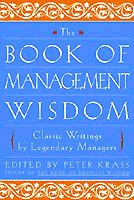 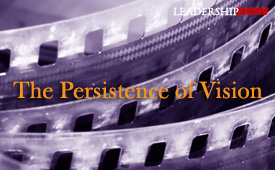
The Persistence of Vision MICHAEL MCKINNEY 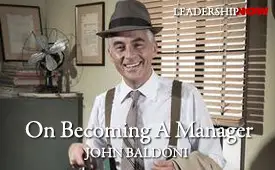
On Becoming A Manager JOHN BALDONI 
Communicating with Power: Putting Leadership on Parade KEVIN DALEY 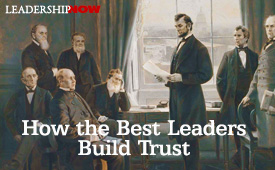
How the Best Leaders Build Trust STEPHEN M. R. COVEY 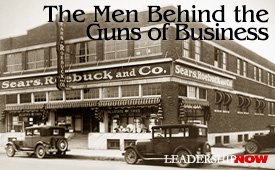
The Men Behind the Guns of Business RICHARD W. SEARS 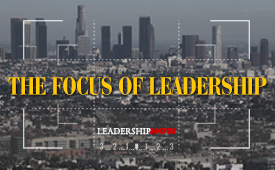
The Focus of Leadership MICHAEL MCKINNEY 
Why Leaders Fail MARK SANBORN |
 |
| ||
 | © 2019 LeadershipNow All materials contained in https://www.LeadershipNow.com are protected by copyright and trademark laws and may not be used for any purpose whatsoever other than private, non-commercial viewing purposes. Derivative works and other unauthorized copying or use of stills, video footage, text or graphics is expressly prohibited. |
||